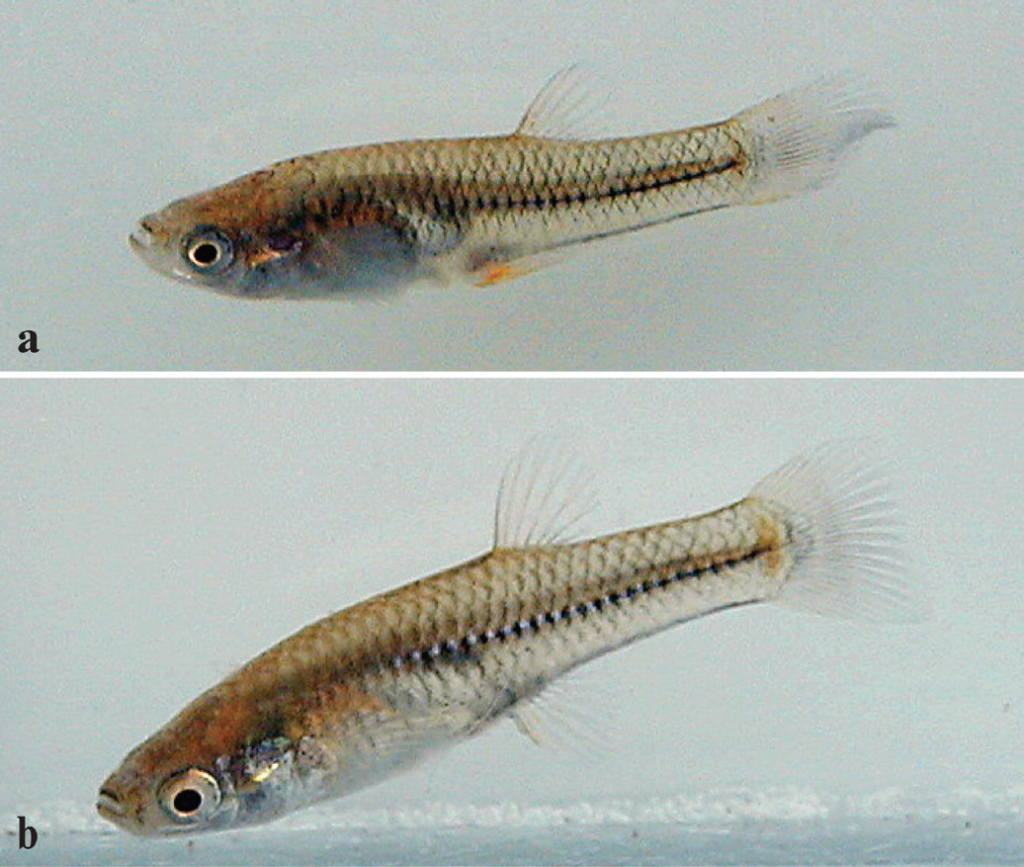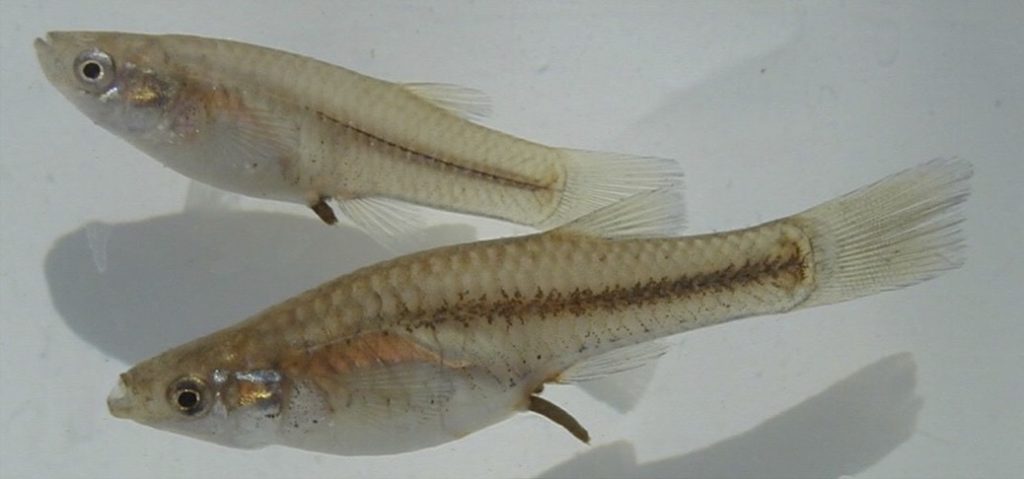
Male (a) and female (b) Río Concepción topminnow, Poeciliopsis jackschultzi, paratype specimens published in Conway, Mateo, and Vrijenhoek 2019.
A new livebearer has been discovered just south of the US-Mexico border. Authors Kevin W. Conway, Mariana Mateos, and Robert C. Vrijenhoek published their findings in the October 2019 issue of ZooKeys.
The new species has been named Poeciliopsis jackschultzi, the Río Concepción topminnow. It has an extremely limited distribution being found only in a 30-km stretch of the Río Concepción (also known as the Río Magdelena) in Sonora State, Mexico. The fish were collected in marshy areas and spring-fed pools adjacent to the Arroyo Alisoso-Bambuto branch of the Río Concepción. This habitat has little to no current, muddy substrate, and sparse aquatic vegetation except for some floating plants. This “microendemic species” is of conservation concern not only due to its highly restricted distribution, but it also faces pressures from human demand for water in the arid region as well as the presence of exotic fish species such as the mosquitofish (Gambusia affinis) and green sunfish (Lepomis cyanellus).
Poeciliopsis jackschultzi occurs alongside and is greatly outnumbered by the Gila topminnow, P. occidentalis and the hybridogenetic all-female poeciliid, P. monacha-occidentalis. These asexual hybrids are hemiclonal and only pass on their maternally inherited, non-recombinant P. monacha genome to their offspring. The paternally derived genome is replaced every generation by the paternal male. To further complicate matters, a mating between a P. monacha-occidentalis female with a P. jackschultzi male will result in hybridogenetic all-female P. monacha-jackschultzi, which also co-occur with P. jackschultzi.
The preponderance of extremely-similar related forms makes it difficult to identify the new species from its congeners. The most reliable external feature to distinguish P. jackschultzi from P. occidentalis in the field is the absence of a black spot at the anterior base of the dorsal fin. Currently, there are no known external morphological characteristics that can be used to discern P. jackschultzi females from the two co-occurring all-female hybrid forms of Poeciliopsis.
The formal description of P. jackschultzi is a follow-up to a study by Mateo, Domínguez-Domínguez, and Varela-Romero (2019) that through genetic analysis uncovered the previously undescribed species. The etymology is in honor of R. Jack Schultz, a pioneer of studies on hybridization and all-female reproduction in Poeciliopsis.

These two female P. jackschultzi were first published as an undescribed species in Mateos, Domínguez-Domínguez, and Varela-Romero 2019. Photograph by R.C. Vrijenhoek.
References:
Conway, K.W., M. Mateos, and R.C. Vrijenhoek. 2019. A new species of the live-bearing fish genus Poeciliopsis from northern Mexico (Cyprinodontiformes, Poeciliidae). ZooKeys 883: 91-118. https://doi.org/10.3897/zookeys.883.37586
Mateos, M., O. Domínguez- Domínguez, and A. Varela-Romero. 2019. A multilocus phylogeny of the fish genus Poeciliopsis: Solving taxonomic uncertainties and preliminary evidence of reticulation. Ecology and Evolution 9(4): 1845-1857. https://doi.org/10.1002/ece3.4874






I currently have endangered species in my fish room. Looks like I may have to add another tank